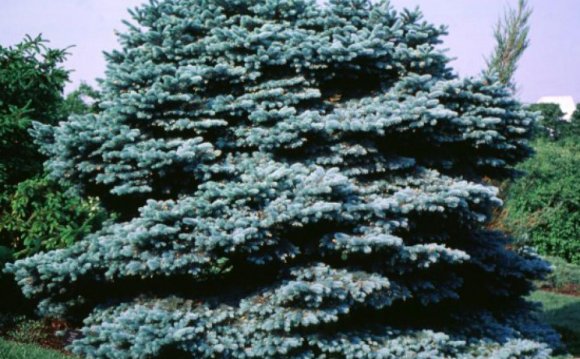
Sometimes in order to get people to do something good, you have to make them understand what’s bad. With that thought in mind, I’ve selected five of the worst things you can plant in front of your house. Some are ugly; some are monstrous; some get bugs and disease; and some manage to do all of these things.
Undoubtedly, some of you have these plants in front of your house and will shortly be greatly offended. That’s OK. Feel free to make disparaging remarks about my worthless, parasitic cat. He won’t know. He can’t read (though he does watch TV). Kinda like Rick Sanchez on CNN.
Awfulest of the Awful — Golden Euonymus
If you plant this in front of your house, you probably gave your girlfriend a pop-top for an engagement ring. I used to call golden euonymus a “gas station plant, ” until gas stations cleaned up their act and substituted plastic palms. Plants like this do nothing for the housing market. They are a sign that says, “For Sale by People with Absolutely No Taste.”
So what’s wrong with golden euonymus (Euonymus japonicus‘ Aureomarginatus’)? Let me count the ways:
1. Mildew and scale eat it up.
2. The foliage often reverts to green, so you wind up with a bush that’s half green and half yellow.
3. The garish foliage is about as subtle as a working girl’s wardrobe.
Awful Plant #2 — Bradford Pear
Every Grumpian should have seen this one coming. I hate Bradford pear (Pyrus calleryana ‘Bradford’)! It’s everywhere. Bragging about having one in your front yard is like bragging you have a toilet in your house.
This is why I despise it:
1. It gets too big for the average yard — 50 feet high and 40 feet wide. The only excuse for planting a row of them is if you’re trying to block the view of a highway overpass.
2. Surface roots and dense shade makes it impossible to grow grass beneath it. Of course, if you’ve already blacktopped your yard, this won’t be a problem.
3. Weak branching structure makes it very prone to storm damage. Photograph it when it’s pretty. It won’t stay that way long.
4. Its spring flowers smell like fish.
5. Although its flowers are self-sterile, they can cross-pollinate with other selections of callery pear, such as ‘Aristocrat’ and ‘Cleveland Select.’ When they do, they produce thousands of tiny pears, which give rise to thousands of thorny seedlings are are now invading the countryside.















